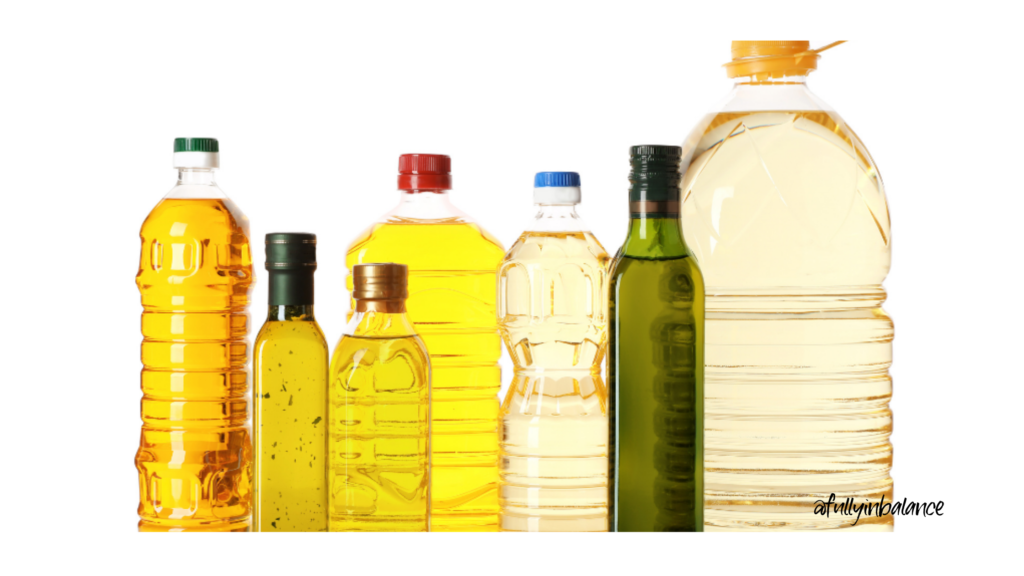Cooking Oils You Need to Know and How to Use Them!
Ever wondered how often we use oils in Jewish cuisine?
Navigating the realm of cooking oils can indeed present a puzzle. Whether it’s achieving that perfect crispiness in latkes, crafting delectable Pesach cakes, preparing comforting Shabbos kugels, or tossing vibrant salads, oils play a vital and versatile role in every step of the Jewish culinary journey.
Deciding on the best oil for cooking can be a bit confusing and therefore I have put together a useful guide.
Before we dive in, let’s think about a few things:
What are we using the oil for? Cooking, frying, making salads, or baking?
What is the oil’s smoke point level and its fatty acid healthy balance?
It’s like a balancing act. On one hand, we want an oil that works well at high heat, but we also want it to have the right kinds of healthy fats, like Omega 3 and Omega 6.
And if the oil has lots of good stuff like antioxidants and vitamins, that’s even better!
When possible, buy and use organic, unrefined, cold-processed vegetable oils.
For Salads: or to add to cooked foods: use extra virgin olive oil, but not for high-temperature cooking.
For Baking: use virgin coconut oil (high in beneficial saturated fats) for most mid-temperature cooking. However, coconut oil has a smoke point of about 171C / 350F degrees. This means it is not suitable for high-temperature cooking.
For Cooking: at high temperatures, use avocado oil, it has a very high smoke point by comparison to other cooking oils. It will not burn or smoke until it reaches 271C/ 520F, this is ideal for searing meats and frying in a wok.
For Frying: Schnitzel, falafel, or donuts on Chanukah, avocado oil will be your oil.
If it’s not available, you might want to choose an oil that is not that healthy from the fat point of view, but yes from the smoke point of view.
Peanut oil can stand a high smoke point and not cause the oil to oxidize quickly, which causes body inflammation.
Peanut oil may not be the healthiest oil but it is the healthiest choice when it comes to frying if you don’t have avocado oil.
WHAT ABOUT CANOLA OIL?
Since I know that canola oil is a very common oil used in Jewish cuisine.
Here’s a breakdown of its pros and cons for baking and cooking, along with some healthier alternatives to consider:
- Pros:
- Neutral flavour – Makes it versatile for various baking and cooking applications.
- High smoke point (around 200C/400°F) – Suitable for most cooking methods, including frying and stir-frying.
- Relatively affordable and readily available.
- Contains some monounsaturated fats (considered healthy fats).
- Cons:
- High in Omega-6 fatty acids compared to Omega-3s. An ideal ratio is closer to 1:1, but canola oil leans towards 2:1. While both are essential, too much Omega-6 can contribute to inflammation.
- Some studies suggest potential downsides of long-term consumption due to processing methods.
Where it might not be so easy to find Kosher avocado oil in many European countries, and yes, it might be more expensive than others, however, isn’t your health worth the expense?
Good news are that Iherb.com delivers internationally to your door Kosher avocado oil La Tourangelle, Delicate Avocado Oil with StarK hechsher, so might be worth the investment for your health.
To help clarify some confusion with oil usage here is a chart with the basic ones.
COOKING OIL COMPARISON CHART
(Source: John Baron)
Note: Lower Omega-6:Omega-3 ratios are generally better for health (ideally around 1:1).
Example: For the Sunflower Oil -> for every 40 parts Omega-6 fatty acids there is only 1 part Omega-3 fatty acid.
| Cooking Oils / Fats | Smoke Point °C | Smoke Point °F | Omega-6: Omega-3 Ratio (plus other relevant fat information) |
|---|---|---|---|
| Extra virgin olive oil | 160°C | 320°F | 73% monounsaturated, high in Omega 9 |
| Unrefined walnut oil | 160°C | 320°F | 5:1 |
| Coconut Oil | 177°C | 350°F | 86% healthy saturated, lauric acid (has antibacterial, antioxidant, and antiviral properties). Contains 66% medium chain triglycerides (MCTs). |
| Canola Oil | 200°C | 350°F | Canola oil 200°C 400°F 2:1, 62% monounsaturated, 32% polyunsaturated |
| Sesame Oil | 210°C | 410°F | 42:1 |
| Peanut Oil | 227°C | 440°F | 32:1 |
| Sunflower Oil | 277°C | 440°F | 40:1 |
| Palm oil | 232°C | 450°F | 46:1, mostly saturated and monosaturated |
| Avocado Oil | 271°C | 520°F | 12:1, 70% monounsaturated, (68% Omega-9 fatty acids) High in vitamin E. |
ADDITIONAL OIL OPTIONS:
Here are some other oils you might consider for your kitchen:
Grapeseed oil: This lightweight oil shines with its exceptionally high smoke point (around 215°C or 420°F), making it ideal for high-heat cooking methods like stir-frying or searing. It also boasts a neutral flavour, perfect for salad dressings and marinades. However, it lacks the heart-healthy monounsaturated fats found in olive oil.
Vegetable oil (blend): A familiar pantry staple, vegetable oil is typically a blend of various oils, often including soybean, corn, and sunflower oil. While convenient and versatile with a high smoke point (around 200°C or 400°F), vegetable oil can be high in Omega-6 fatty acids. A balanced diet ideally leans towards a 1:1 ratio of Omega-6 to Omega-3, but vegetable oil often leans towards 2:1. If you use vegetable oil, consider limiting its use and explore healthier options for everyday cooking.
Light olive oil: This refined version of extra virgin olive oil offers a solution for those who love the taste of olive oil but need a higher smoke point (around 240°C or 470°F). This makes it suitable for tasks like sauteing, pan-frying, and light stir-frying. While it loses some of the antioxidants present in extra virgin olive oil due to processing, it still retains some health benefits and offers a touch of olive oil flavour.
For Flavourful Accents:
- Toasted sesame oil: While not recommended for high-heat cooking due to its lower smoke point (around 180°C or 350°F), toasted sesame oil adds a rich, nutty depth of flavour that can elevate various dishes. Drizzle it over vegetables, noodles, or even popcorn for an extra kick. However, remember it’s high in Omega-6 fatty acids, so use it sparingly.
By understanding different fats and oils and their ideal uses, you can make informed choices that contribute to a healthy lifestyle.
- Any oil starts to degrade once it reaches its smoke point. So, if you accidentally let your oil smoke or catch fire, get rid of it and start over.
- If oil smells bad, don’t use it. When an oil is stored too long it can become oxidized or rancid. It will have a distinct smell, and you should get rid of it.
- Don’t reuse or reheat any cooking oil.
- Buy cooking oils in smaller containers to avoid waste, and store them in a dark, cool place to keep them fresh longer.
- Choose oils with less than 4 grams of saturated fat per tablespoon.
- If you accidentally let your oil smoke or catch fire, discard it immediately
Healthy fats are essential to give the body the energy it requires and to support cell growth.
Know your fats, know your oils and how to use them to maintain that healthy lifestyle you are seeking.
IN SUMMARY:
For everyday cooking that prioritizes health, avocado oil and olive oil (especially extra virgin for lower heat applications) are generally better choices due to their favourable fatty acid profiles. If you use vegetable oil, use it in moderation. Grapeseed oil and toasted sesame oil are fantastic options for specific uses like high-heat cooking or adding a flavour boost, but keep in mind their limitations when it comes to overall health benefits.
Remember: Moderation is key! Regardless of the oil you choose, use it in reasonable amounts as part of a balanced diet.



